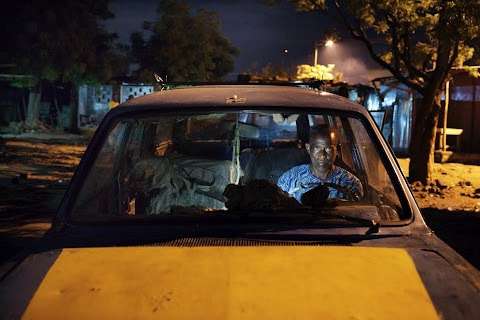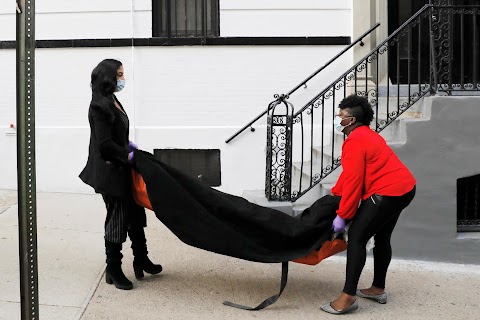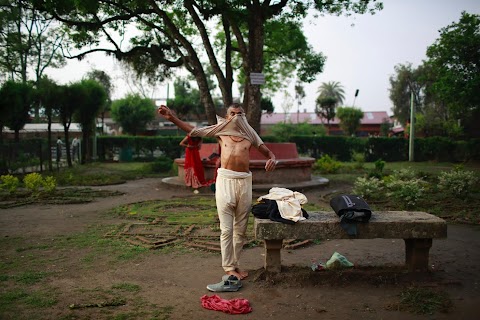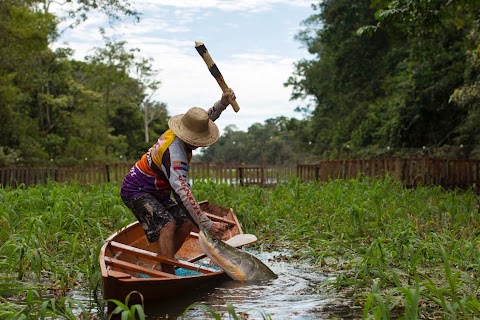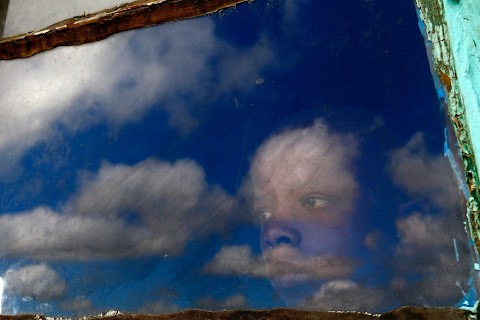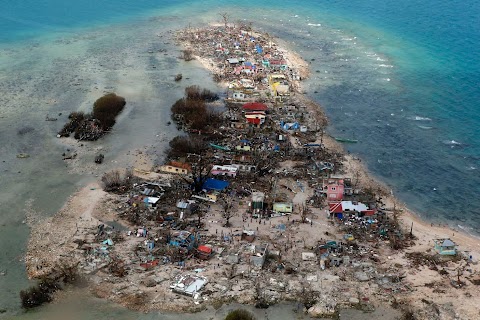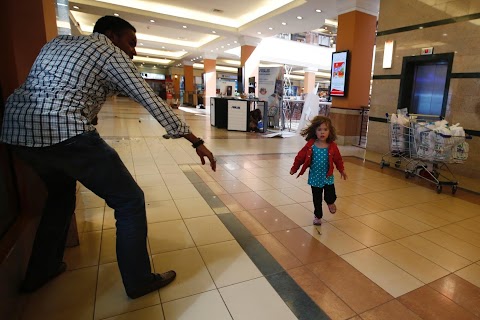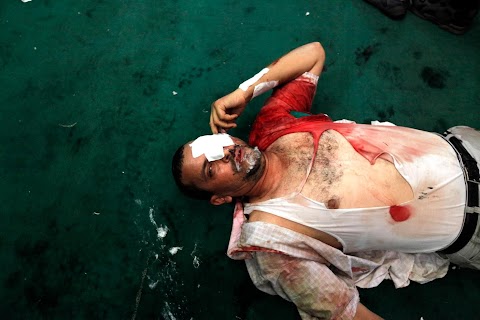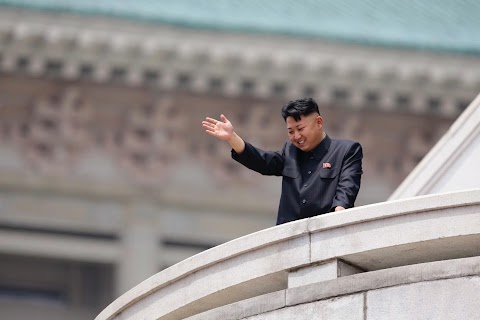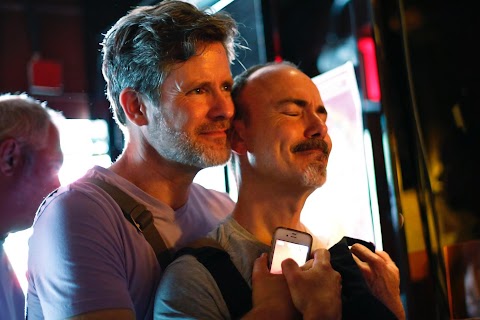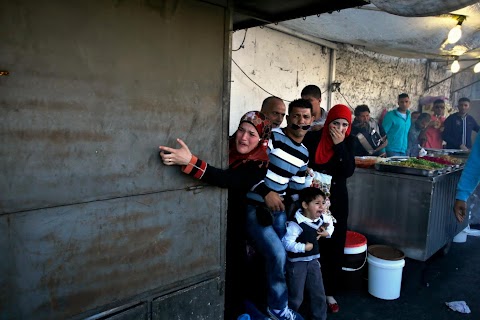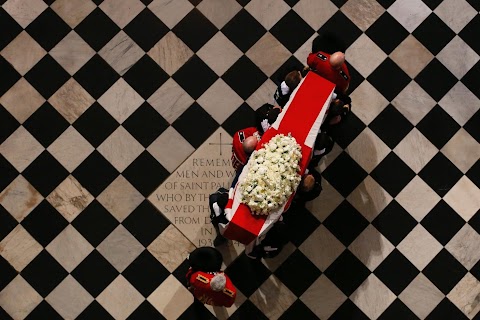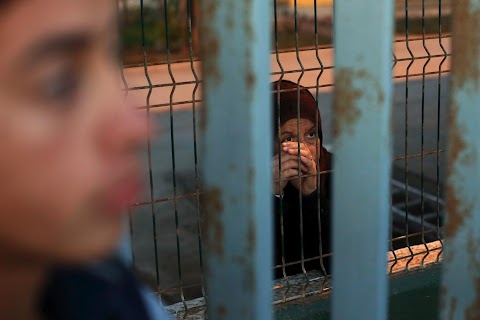
Caught in the middle
 Juan Medina
Juan Medina
Divided by a rusty fence, two Syrians wait at a refugee centre in the small Spanish enclave of Melilla, on Morocco's north coast.
Hundreds of Syrians and many others fleeing poverty and conflict have fetched up at the town, hoping to reach the prosperity and safety of Europe, 180 km (110 miles) away across open water.

Armed guards and razor wire lining the 12-km (7.5-mile) frontier around Melilla have long discouraged migrants from seeing it as a gateway to Europe.
Yet despite these fortifications, desperation has driven many escaping war, poverty or instability to make their way to the area.
Spain says that in the first half of 2013 it took in some 3,000 illegal migrants, twice the number in the first half of 2012.
Most came via Melilla and its other main African enclave, Ceuta, where detention centres send asylum-seekers over to the Spanish mainland once they become too overcrowded.

Yahya Khedr has travelled for more than two years, through five countries and with six forged passports to get his family from the war-ravaged Syrian city of Homs to Europe.
His wife and five children have reached Melilla, and now live with about 900 other migrants in the low-rise compound that forms the town's immigration holding centre - designed to house little more than half that number.
"People make it to Melilla hoping to find Europe," said Khedr, who before his country's war owned a successful European truck-parts import business. "But here, it's an open-air jail."

Serge, a migrant from Cameroon, holds baby Kader as they stand with others at a clandestine campsite just outside Melilla.
While some immigrants manage to sneak into the town by using fake passports, hundreds of less well-off people, mostly Africans from south of the Sahara, camp outside looking for a chance.
"Immigration is like water. It always seeks a way to flow," says Jose Palazon, a Melilla teacher who heads Prodein, an organisation that helps immigrants, especially the children who hide around the town's docks in the hope of sneaking aboard ferries and other ships heading for mainland Spain.
"If you close all waterways, the level goes up, like on a dam. Until it spills over," Palazon said, likening that to the way migrants who camp out in the woods and hills around Melilla periodically try to rush the security fence to get inside.
Slideshow

African migrants watch for police near a clandestine campsite named Bolingo in northern Morocco, close to the border fence with Melilla.

A baby named Kader sits on a plastic chair at the campsite.

A copy of the Bible lies on the ground.

Rachel, a migrant from Cameroon, cooks food at the campsite.

An African migrant warms himself by a fire.

Cisse Tiemouko, a migrant from Ivory Coast, warms his hands.

The border fence between Morocco and Melilla runs along the side of a road in the enclave.

A truck driver reacts to a Spanish civil guard sniffer dog at the Beni Ansar border crossing between Morocco and Melilla.

Moroccans queue at the crossing.

Khedidja Azzouz, a 24-year-old Algerian who is pregnant and homeless, stands near a fire in Melilla.

Immigrants from Mali sit on a bank in the enclave.

Brunel, a 14-year-old from Cameroon, plays football.

Mohamed, a Moroccan youth, smokes a cigarette near Melilla's harbour.

Morocco's mount Gurugu rises in the background behind a Spanish flag flying in Melilla.

A Moroccan youth climbs along a wall overlooking Melilla harbour, where a ship prepares to set off towards mainland Spain.

African migrants gather at the side of a road at sunset.
